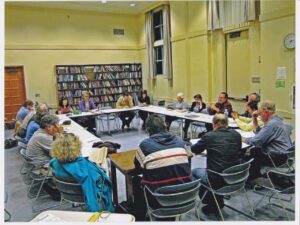On April 25 and 26, 1986, a reactor at the Chernobyl Nuclear Power Plant in what is now known as Ukraine exploded, forcing a region-wide evacuation and sending radioactive fallout cascading across Europe.
It was the largest nuclear fallout to date.
The Chernobyl disaster turned a once thriving town into a ghost town that has, in subsequent years, served as a cautionary tale about the dangers of nuclear power and radiation.
More recently, the mini-series Chernobyl has renewed interest in one of the most fascinating and terrifying events in human history.
Here’s VICE:
The five-part miniseries takes us back to the city of Pripyat, Ukraine, in the early morning hours of April 26, 1986. It shows the city’s citizens woken by a sudden explosion at reactor number four of the nearby Chernobyl plant.

It shows the first-responders who attempt to quell the fire in the reactor’s core, and who then lie putrefying in hidden hospital beds as the burning plant spews a poisonous cloud over the entire region.
You get the idea. Also, if you want more of a visual, check out the photos from inside the radioactive zone.
Part of the attraction for people (and the tourists who are now flocking there), is that it’s horrifying, but also something that supposedly won’t happen again.
Arguing Chernobyl could never happen again has become commonplace in the west. As Google searches for Chernobyl spiked after the breakout success of the television series (which is the highest-rated show on IMDB in television history), the Nuclear Energy Institute—the policy arm of America’s nuclear technology industry—released a fact sheet assuring the American populous of the rigorous safety of their reactors in comparison to Chernobyl. It even ran advertisements on Google searches for Chernobyl stating that “we need nuclear.”
Here’s the thing, though – it can happen again because nuclear reactors are, by their very definition, immensely difficult to control.
They’re complex and require constant upkeep. They are frequently the stated target of terrorists. And they are vulnerable to the freak weather events and seismic shifts that, thanks to our warming of the climate, are rapidly increasing in regularity and scale.
Yep, global warming could turn a town near you into the new Chernobyl. Think about that next time you watch Trump deny climate change.
At the moment, nuclear power is still far-and-away the most efficient low-carbon energy generation solution. If we want to imagine a future without fossil fuels, then the proliferation of nuclear energy has to continue, in the global north and the global south, alongside and in partnership with a comparable revolution in renewables.
We use nuclear power in SA, and don’t seem to be getting that much closer to renewable energy sources.
Let’s just hope the people in charge are more competent than those in the Soviet Union back in 1986.
[source:vice]





